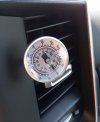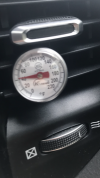Dusty1948
Ram Guru
- Joined
- Jul 14, 2018
- Messages
- 1,251
- Reaction score
- 853
- Points
- 113
- Age
- 77
- Location
- Rochester, New York
You are avoiding the point. TSB or no TSB, what is the spec? Are you trying to say there's no longer a specification? The fact that the TSB doesn't mention the spec, or to reference the service manual, does not imply that the service manual is no longer relevant to checking AC performance. Technicians are trained to always source the service manual for specifications.You can keep arguing about the service manual and spec but you are 100% wrong on this one. Yet the TSB clearly does not reference the service manual and/or spec contained in it. Nor does it say that the technician needs to reproduce the issue. I've read through enough TSBs to know that the dealership has to reproduce the error is in an overwhelming majority of them.
It can't be any more clear than this one line.
If the customer describes the symptom/condition listed above, perform the Repair Procedure.
This is a 5+ hour job. I can confidently say that Ram would not redesign the HVAC housing and then issue a TSB that basically boils down to "take the customer's word for it and JUST DO IT" for ****s and giggles.
Even the failure code dealerships are instructed to use proves that point
FAILURE CODE:
The dealer must use failure code CC with this Service Bulletin.
The TSB is a default, it simply recognizes that Ram has already determined there's a flaw in the design based on a production timeline (built before July 30, 2020) and if a customer complains about AC performance the HVAC replacement is automatically warranted. Replacing the HVAC components does not mean there's no longer a spec.
So where am I wrong?
Regards,
Dusty
2019 Ram 1500 Billet Silver Laramie Quad Cab 2WD, 5.7 Hemi, 8HP75, 3.21 axle, 33 gallon fuel tank, factory dual exhaust, 18” wheels. Build date: 03 June 2018. Now at: 053711 miles.













